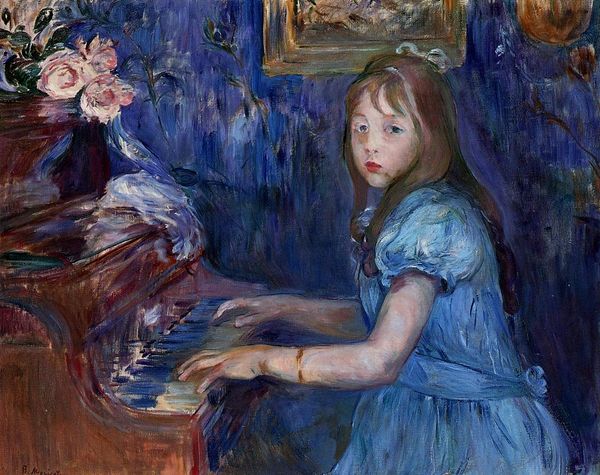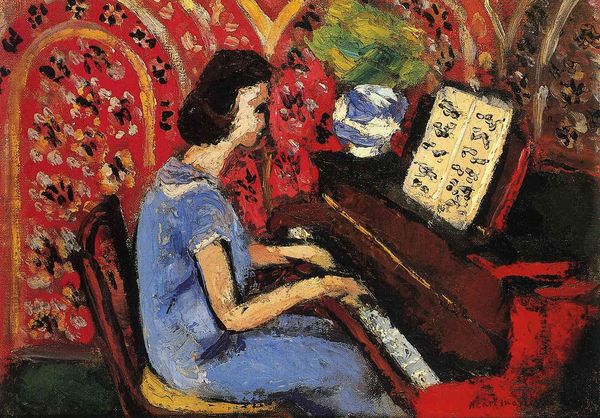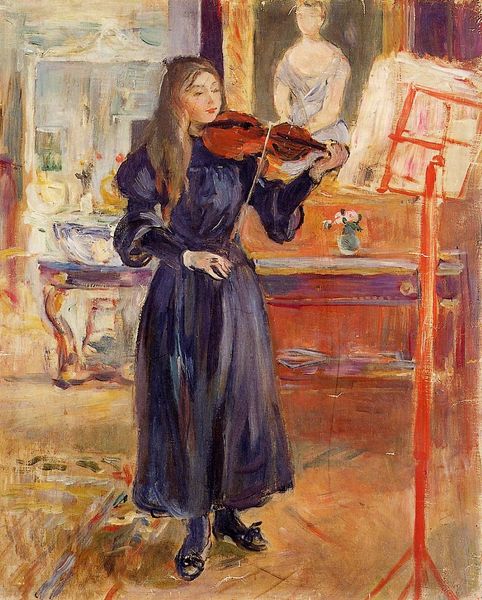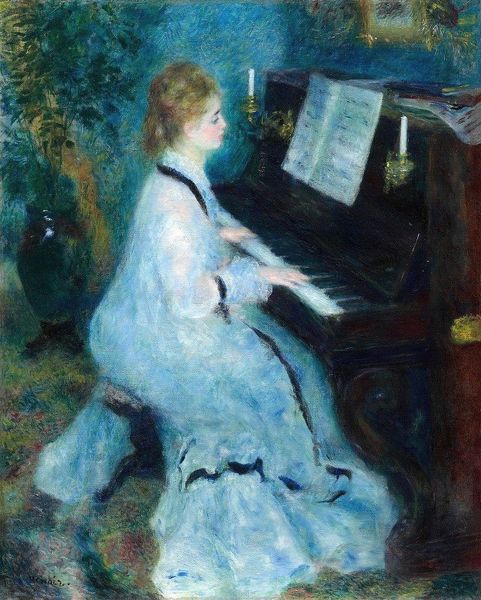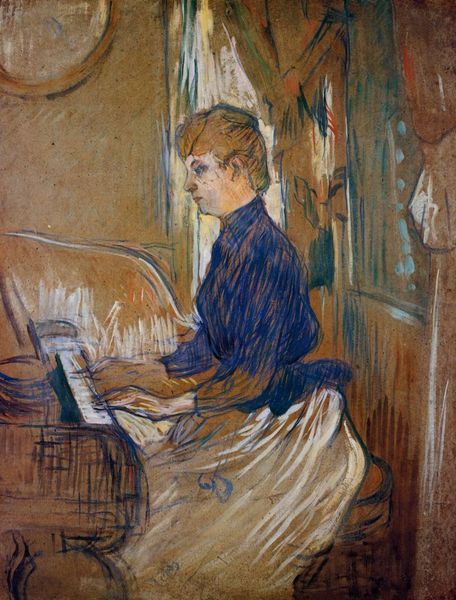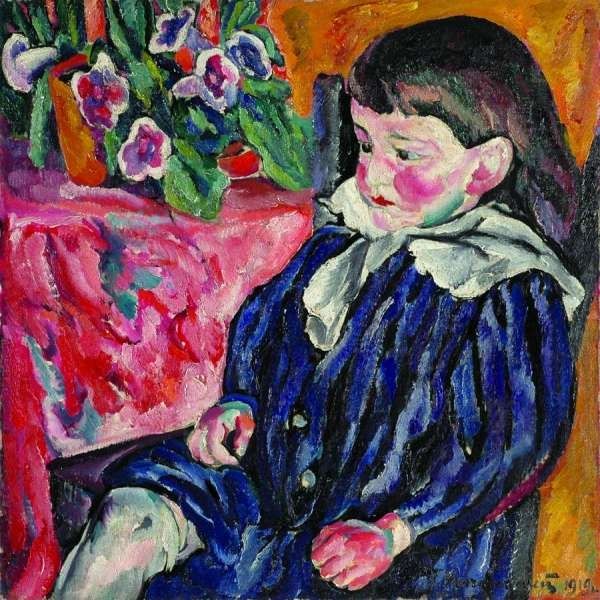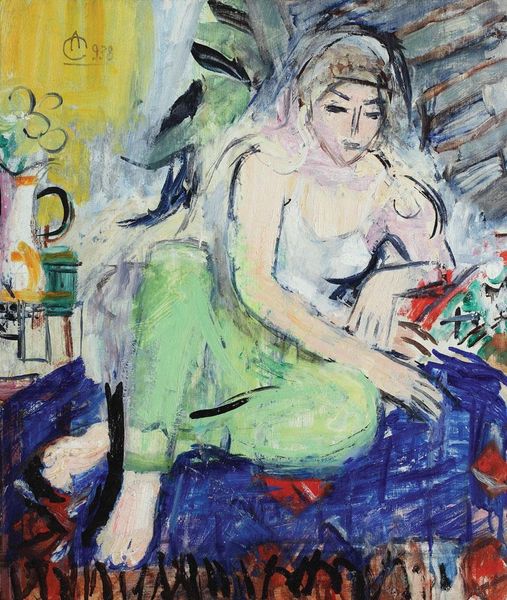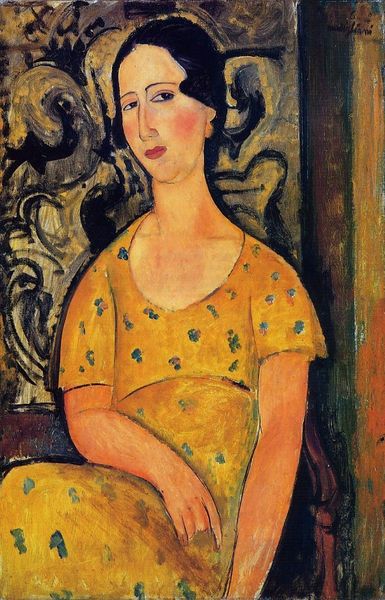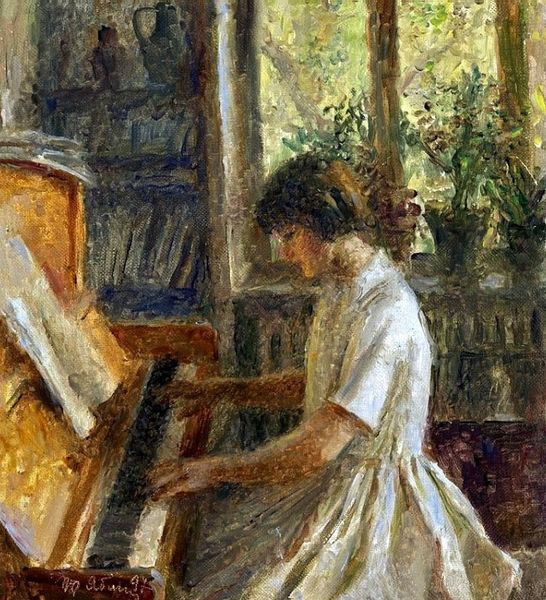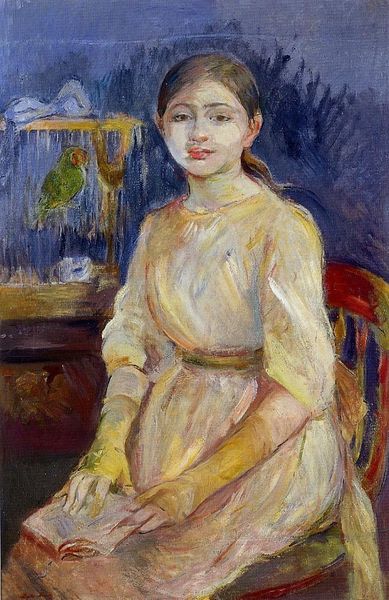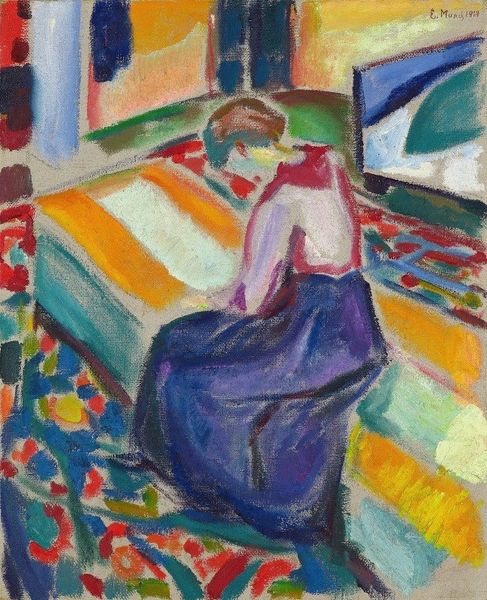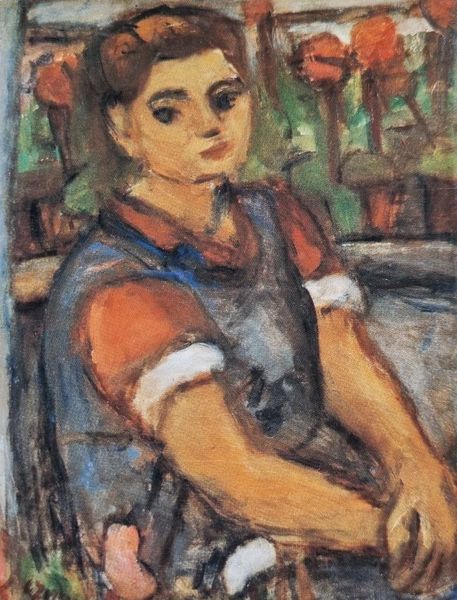
Copyright: Public domain US
Curator: Oh, this portrait hits you with its bold, unconventional use of colour doesn't it? Editor: It does indeed. The electric blue dress, the crimson cheek—there's a real immediacy here. There is a certain dissonance that makes it unsettling. Curator: Pyotr Konchalovsky painted "Portrait of Daughter" in 1912. He was deeply involved with avant-garde movements, particularly the spirit of Fauvism which influenced his art through this period. Looking at this painting, we can trace how the Fauvist aesthetic gave way to a modern perspective. The fauvist element exists in the portrait with its bold brushstrokes of impasto creating a vibrating tension on the surface. Editor: One sees traces of that avant-garde spirit. However, the domestic scene of a girl at the piano reminds us that even the boldest experimentations are conducted in a socio-historical setting. How was art, during the early 20th century, representing new social dynamics? How did it address notions of class or the ideal of feminine education? I feel Konchalovsky asks these questions here. Curator: Absolutely, and consider how "portrait" itself becomes destabilized here. Konchalovsky rejects any attempt at likeness. The girl’s facial expression and stylized pose seems to evoke discussions about what constitutes “the real” versus what society understands to be representative of childhood. The vibrant colour scheme seems to reinforce these concepts. Editor: I appreciate you bringing us back to the construction of childhood. It’s so tempting to separate formal experiment from political context. You point out that every brushstroke echoes social concerns about domestic life and representation itself. These questions were hotly debated in intellectual and artistic circles at the time. The Fauvist colours and distorted perspectives are, perhaps, reflective of this distortion. Curator: The bright color and bold paint application are evidence of the experimental and free environment of modernism. In light of our discussion, viewing art involves recognizing not only how it functions, but also who decides how we get to see its functionality, and I believe that is something to walk away with here. Editor: An apt observation indeed!
Comments
No comments
Be the first to comment and join the conversation on the ultimate creative platform.
